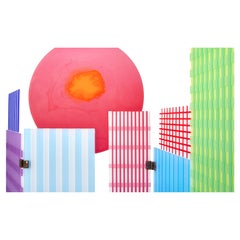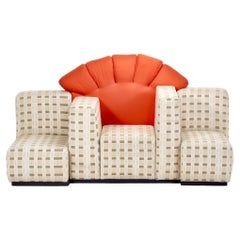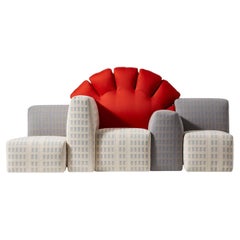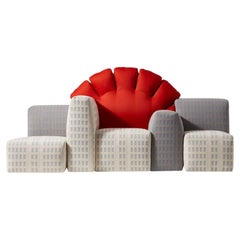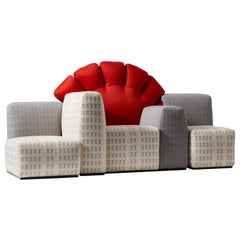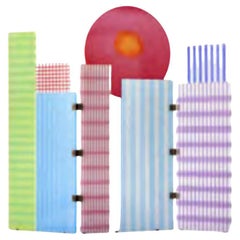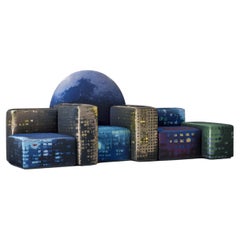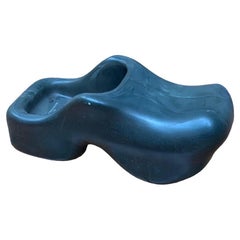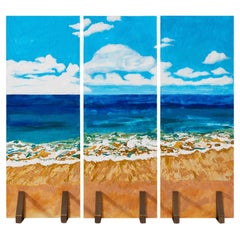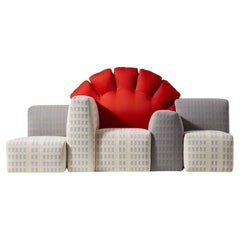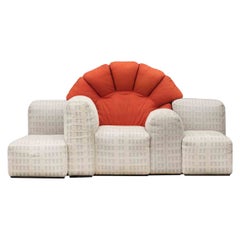Tramonto A New York
2010s Italian Mid-Century Modern Screens and Room Dividers
Brass
Vintage 1980s Italian Sofas
Fabric, Polystyrene, Wood
2010s Italian Mid-Century Modern Sofas
Polyester
21st Century and Contemporary Italian Mid-Century Modern Sofas
Fabric
2010s Italian Mid-Century Modern Sofas
Fabric
2010s Italian Mid-Century Modern Screens and Room Dividers
Resin
2010s Italian Mid-Century Modern Sofas
Fabric
Vintage 1970s Italian Modern Figurative Sculptures
Rubber
2010s Italian Mid-Century Modern Prints
Resin
Recent Sales
21st Century and Contemporary Italian Mid-Century Modern Sofas
Fabric
Vintage 1980s Italian Sofas
Fabric, Wood, Polystyrene
20th Century Italian Modern Sofas
Polystyrene, Wood
2010s Italian Mid-Century Modern Armchairs
Wool
2010s Italian Mid-Century Modern Armchairs
Wool
Vintage 1970s Italian Mid-Century Modern Sofas
Vintage 1970s Italian Modern Sofas
Fabric, Foam, Plywood, Polyester
People Also Browsed
2010s American Modern Stools
Brass
2010s Italian Mid-Century Modern Chandeliers and Pendants
Brass
Mid-20th Century French Mid-Century Modern Chairs
Wood
Mid-20th Century Italian Mid-Century Modern Coffee and Cocktail Tables
Glass, Walnut
21st Century and Contemporary Italian More Lighting
Art Glass
Early 2000s Italian Rococo Wall Mirrors
Murano Glass
Antique 19th Century Unknown Organic Modern Natural Specimens
Wood
Early 20th Century French Chinoiserie Screens and Room Dividers
Wood, Mother-of-Pearl
2010s American Modern Barware
Brass
Vintage 1940s Danish Scandinavian Modern Wall Lights and Sconces
Brass
Antique 1880s French French Provincial Industrial and Work Tables
Carrara Marble, Brass
Vintage 1960s American Mid-Century Modern Dining Room Sets
Metal
21st Century and Contemporary Italian Modern Sideboards
Steel
2010s American Modern Vases
Brass
Vintage 1960s Italian Mid-Century Modern Coffee and Cocktail Tables
Glass, Smoked Glass, Wood, Walnut
Vintage 1930s Italian Console Tables
Bentwood
Tramonto A New York For Sale on 1stDibs
How Much is a Tramonto A New York?
Gaetano Pesce for sale on 1stDibs
Gaetano Pesce was of a generation of Italian architects who in the early 1960s rebelled against the industrial perfection of modernism by conceiving new furniture and objects that were at once expressive and eccentric in form; or you might say they were more like art than functionalist design.
Born in the picturesque coastal Italian city of La Spezia in 1939, Pesce was a precocious talent who could have forged a career as an artist but opted instead to go to Venice to study architecture because, as he has said, it was “the most complex of all the arts.” Rather than having new worlds opened to him at design school, however, Pesce found the rationalist curriculum oppressive in its insistence on standardization and prescribed materials and technologies.
Pesce wanted to explore the latest of both materials and technologies to create objects and buildings never before imagined, with what he called “personalities” that spoke to the issues of the day. He was keen to examine ways to diversify mass production so that each manufactured work could be distinct.
In 1964, Pesce met Cesare Cassina, of the forward-looking furniture company C&B Italia in Milan (now known as B&B Italia), for whom he would create many important designs, beginning with a collection of what he called “transformational furniture” — two chairs and a loveseat — made entirely out of high-density polyurethane foam. To make the pieces easy to ship and cost-efficient, he proposed that after being covered in a stretch jersey, they be put in a vacuum, then heat-sealed flat between vinyl sheets. Once the foam was removed from its packaging, the piece returned to its original shape — hence, the name Up for the series, which debuted in 1969.
In addition to these pieces, Pesce proposed for the collection something he referred to as an “anti-armchair,” which took the shape of a reclining fertility goddess, the iconic Donna.
Producing the piece's complex form turned out to be a technical challenge. Bayer, the foam’s manufacturer, deemed it impossible to accomplish. Pesce persisted and came up with a new procedure, demonstrating not only the designer’s key role in researching the nature and potential of new materials but also his vital importance in “doubting rules.” The Up chair and accompanying ottoman were born, and they were revolutionary in more ways than one.
In the early 1970s, Pesce began exploring one of his key concepts, the idea of the industrial originals. Employing a mold without air holes, and adding a blood-red dye to the polyurethane, he cast a bookcase that resembled a demolished wall, the rough edges of the shelves and posts resulting from fissures in the material made by trapped air.
Through his research into polyurethane, Pesce figured out a way to make a loveseat and armchair using only a simple wood frame and strong canvas covering as a mold. Since the fabric developed random folds during the injection process, the pieces were similar but not identical. Cassina named the suite of furnishings Sit Down and introduced it in 1975. By experimenting with felt soaked in polyurethane and resin, Pesce conceived I Feltri, another collection of armchairs introduced by Cassina in 1987.
Pesce went on to live a life that defied expectation and convention and along the way became one of the most seminal figures in art and design.
Find vintage Gaetano Pesce chairs, sofas, vases and more on 1stDibs.
